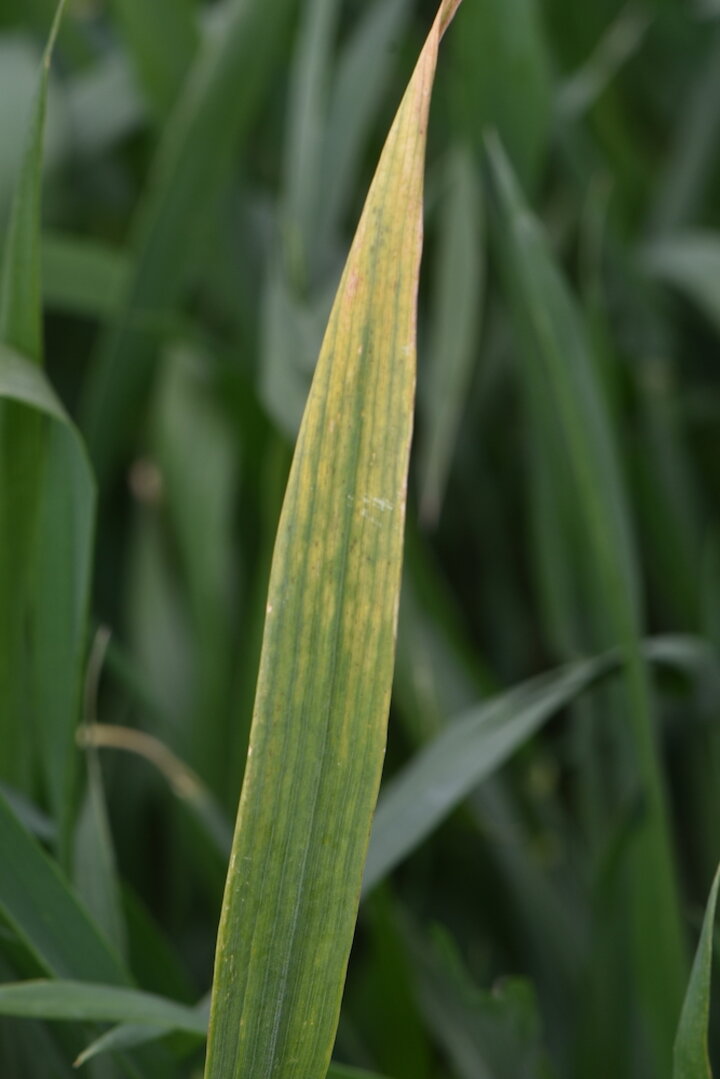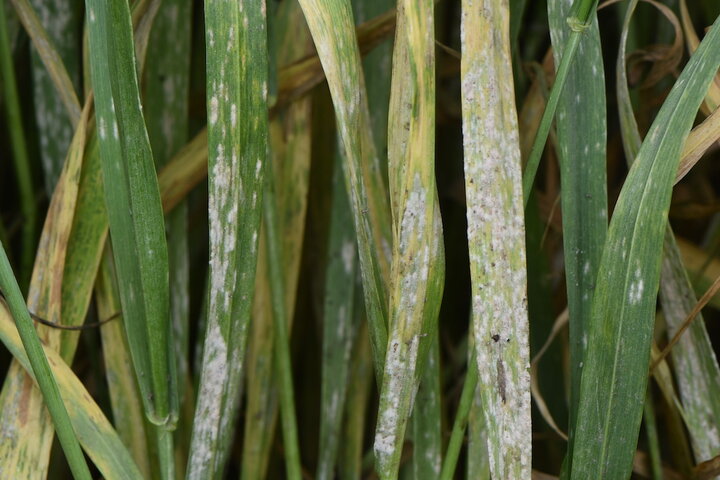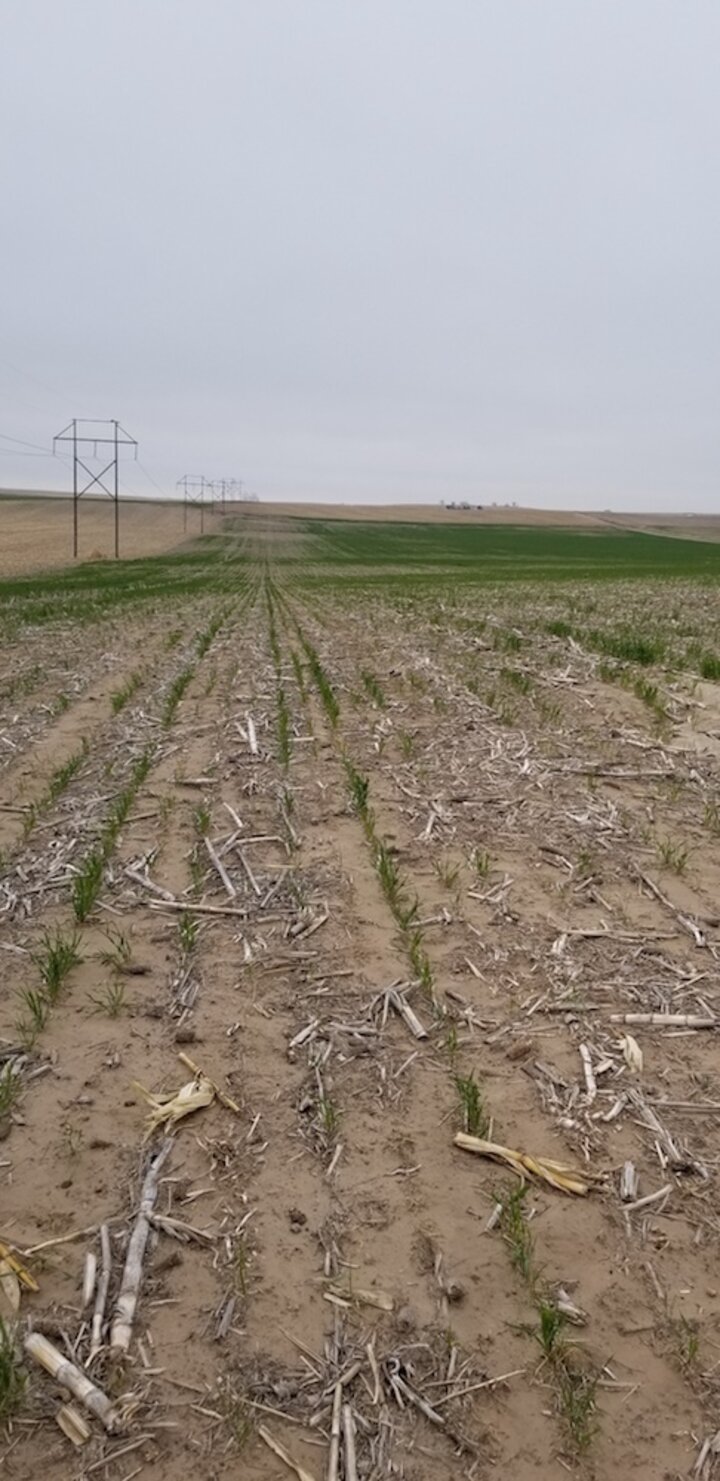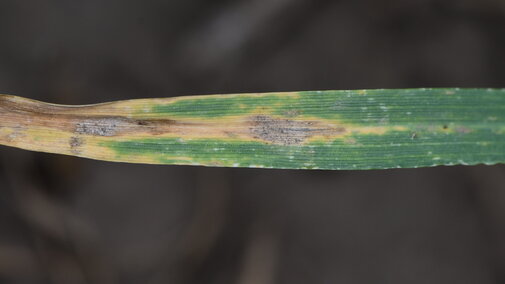Reports from the wheat growing regions in Nebraska indicate low or no disease pressure in most growers’ fields. However, some fields are showing low to moderate levels of disease. Barley yellow dwarf (Figure 1), a virus disease, has been confirmed in some fields in the southern west central part of the state and was observed on May 12 in research plots at Havelock Farm in Lincoln (Lancaster County). Other diseases observed at Havelock Farm were moderate to severe powdery mildew (Figure 2) and Septoria tritici blotch (Figure 3). To date there have been no reports of stripe rust in Nebraska, but it is in Kansas mostly at a low incidence and increasing in some locations.



Scouting
Scouting for early disease detection is a critical step in the successful management of wheat diseases. Sout fields regularly starting early in the growing season. The frequency of scouting depends on weather conditions; it is necessary to scout more frequently if the weather is favorable for disease development. To get an accurate assessment of the diseases present and their levels, scout a representative area of the field by using one of several patterns to walk through the field, for example X, W, or Z. During the process, make frequent stops and examine plants for disease symptoms in the upper and lower canopies of the wheat crop.
Disease Management
Diseases caused by viruses and bacteria cannot be controlled once they occur. Fungal diseases (rusts, leaf spots, and powdery mildew) can be controlled by applying a fungicide timed to protect the flag leaf. If the fungal diseases are confined to the lower canopy, their impact on yield will be minimal. However, if they move up the canopy and threaten the flag leaf, consider applying a fungicide to protect the flag leaf.
Bare Patches in Wheat Fields
Some fields in the west central and southern Panhandle of Nebraska have bare patches (Figure 4) with no disease symptoms on the wheat that emerged, which is indicative of winter injury. The major factor leading to the winter injury was a late seeding date in mid-October in conjunction with a sandy soil and dry environmental conditions at the time of seeding. It is best to seed a little earlier on sandy soil to ensure that the winter wheat has enough growth to cope with the winter weather conditions and has enough growth to prevent wind erosion. Winter wheat seeding date is critical; it should not be too early or too late. Research in a year with low winter wheat yields in west central Nebraska showed that wheat seeded on September 2 yielded 2 bushels, wheat seeded on September 15 yielded 27 bushels, and wheat seeded on September 25 yielded 42 bushels. Other factors that contribute to winter injury are winter wheat variety, seeding depth, loose seedbed, soil moisture along with weed competition, insects, and diseases.


